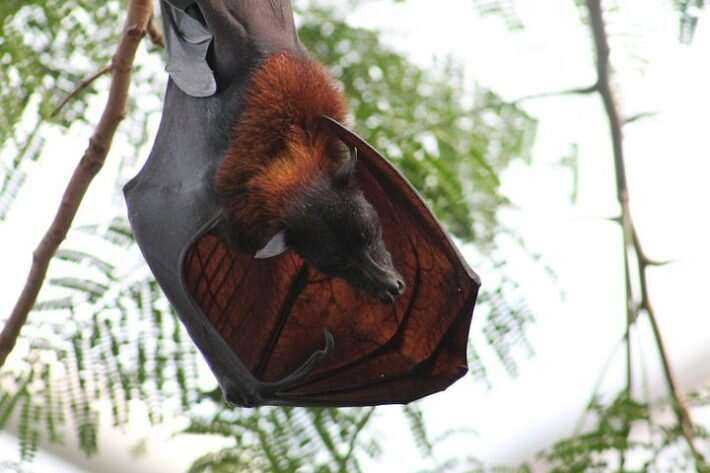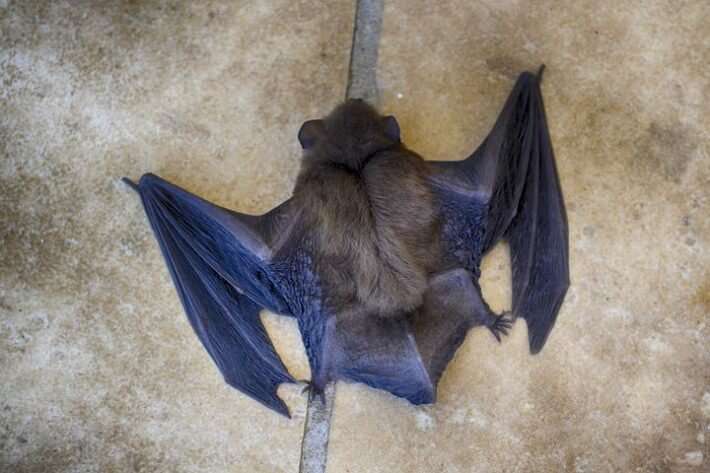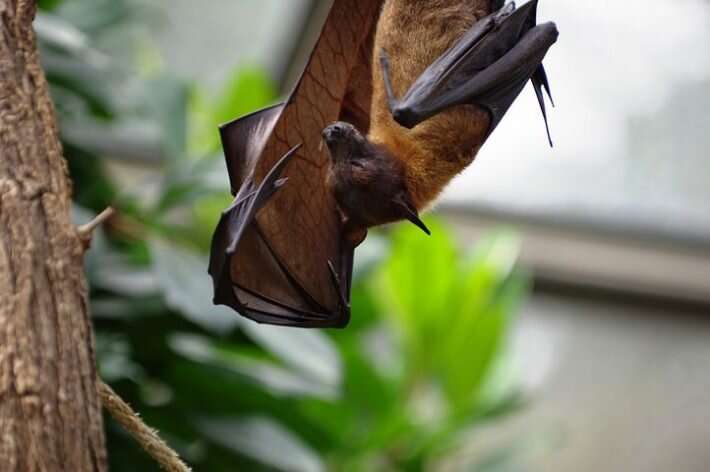This article has been reviewed according to Science X's editorial process and policies. Editors have highlighted the following attributes while ensuring the content's credibility:
fact-checked
trusted source
proofread
Protecting little brown bats from white-nose syndrome

In a new study, researchers have found that little brown bats suffering from white-nose syndrome (WNS) greatly increased their foraging activity at artificial bug buffets. The buffets, located near hibernation sites, will help bats to increase their fat reserves before and after hibernation. This should help them to survive the disease.
Hibernation is especially risky for bats suffering from WNS as it disrupts the hibernation process. As a result, bats can wake up during hibernation, leading to starvation, dehydration and ultimately death.
The study, published in Ecological Solutions and Evidence is a unique and first-of-it's-kind experiment. Targeted at improving conservation efforts for winter colonies at risk of WNS, it is also non-invasive and provides a stable food supply—crucial during winter when bugs are less abundant.
Dr. Winifred Frick, chief scientist for Bat Conservation International, explained "When we created bug buffets, bats ate three to eight times more than usual. Our hope is that bats will eat more, accumulate more fat and recover quicker from WNS."
WNS is one of the worst wildlife diseases in modern times. It has caused severe declines in several hibernating North American bat species, including the little brown bat. Once the most common bat in North America, the species has lost more than 90% of it's population due to WNS. Bats are a critical part of healthy ecosystems, so finding creative solutions to offset the impacts of WNS is imperative.
-

White-nose syndrome can cause North American bats to emerge from hibernation early. Credit: British Ecological Society -

Bats are an important part of a healthy ecosystem. Credit: British Ecological Society
How do bug buffets affect little brown bats foraging?
Scientists aimed to find out if little brown bats would forage at artificial bug buffets where light lures were used to attract the bugs. They measured foraging activity by recording and counting echolocation calls and feeding buzzes emitted by the bats when foraging.
They then compared these numbers with those from locations without bug buffets. The results revealed that bats were foraging at significantly higher rates in sites with bug buffets compared to those without.
"These results reveal that increasing the amount of bugs available to bats near their winter homes will help to combat WNS," said Dr. Frick.
Christian Newman, technical executive for endangered and protective species at the Electrical Power Research Institute, added, "This research can lead to practical and scalable conservation solutions that are desperately needed to address the threat of WNS in North American bats."
The release of this paper coincides with bats' preparation to emerge from hibernation. In the long term, researchers hope to provide bug buffets and help bats survive near hibernation areas throughout their range.
More information: Winifred F. Frick et al, Bats increased foraging activity at experimental prey patches near hibernacula, Ecological Solutions and Evidence (2023). DOI: 10.1002/2688-8319.12217
Provided by British Ecological Society



















